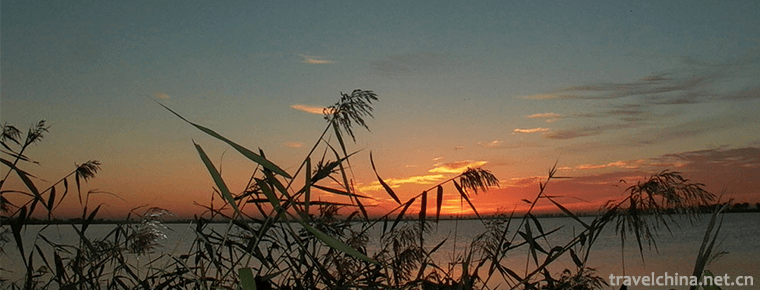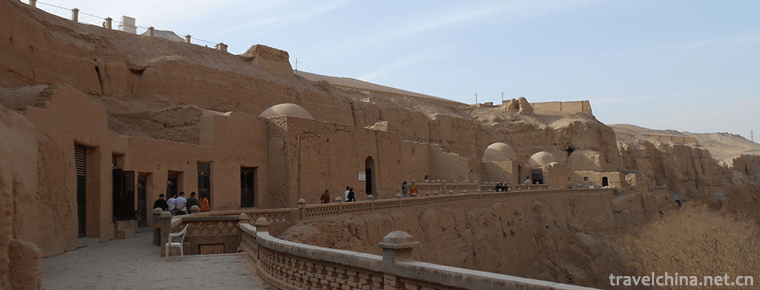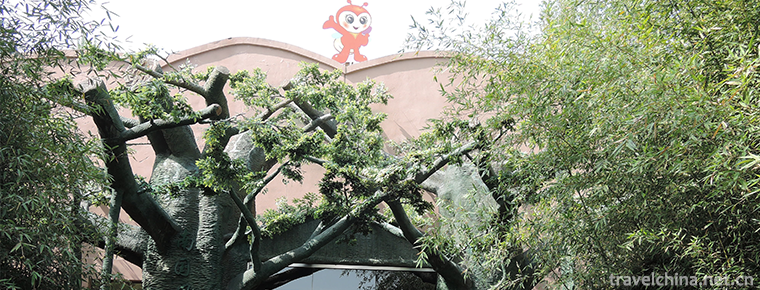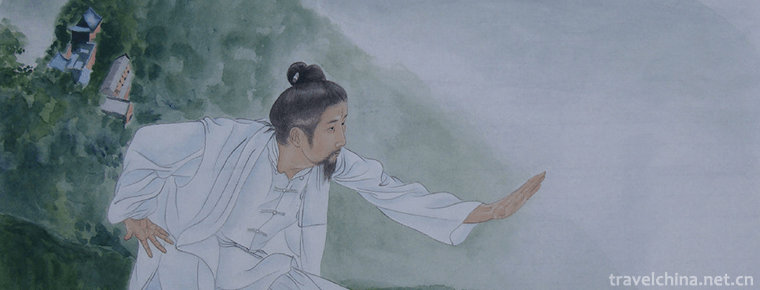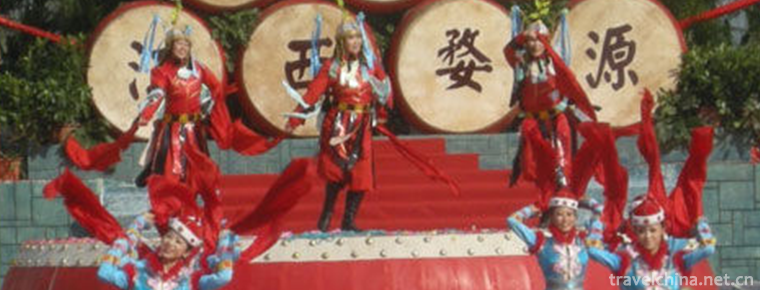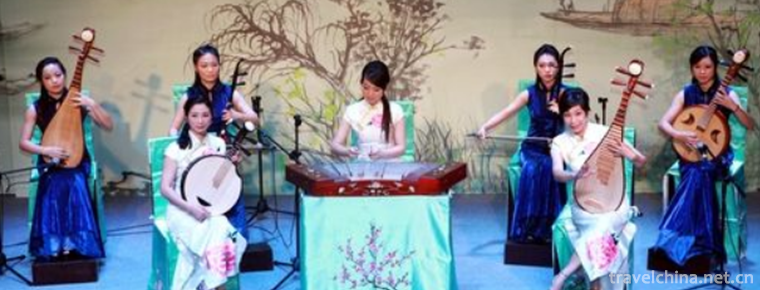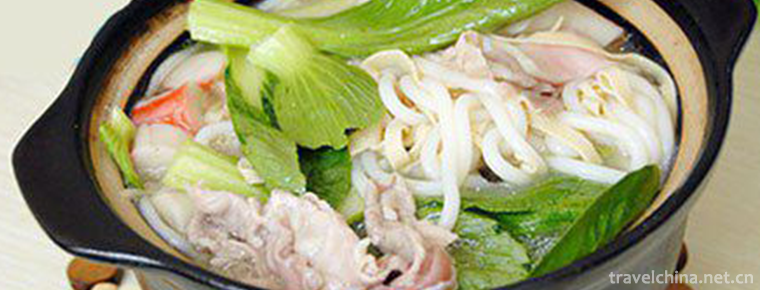Xujiaquan
Xujiaquan
Xujiaquan, a traditional boxing method, originated in Tongji Village, Xintai City, Shandong Province. Xujiaquan originated in Yongzheng Period of Qing Dynasty and was created by Xu Shengcai, Gaozu of Xu. Xujiaquan's boxing is popular because of its strong combat and performance.
On November 11, 2014, Xujiaquan was listed in the fourth batch of national intangible cultural heritage list with the approval of the State Council.
Origin of Boxing
Xu Shengcai was born in 1725 (2 years in Yongzheng, Qing Dynasty) and died in 1797. The male practised martial arts from his childhood. He went south and north to learn from his teachers. He practiced all his stunts and founded Xujiaquan. Over the past hundred years, it has been handed down from generation to generation. By the sixth generation, Xu Huating, Xujiaquan has formed a complete system and set off a new climax. According to the records of old county chronicles and Xu's genealogy, Xu Huating, Zidian Jia, was born in 1826 (Qingdaoguang 5 years), and died in Tongji Village in 1900. Xu Huating has a great face and strong arms. As he is good at research, he enriched the connotation of Xujiaquan and carried forward the use of Xujiaquan and various weapons. Xu Huaqu was highly skilled in martial arts. He participated in many large-scale competitions and ranked first. He was named Wu Kuisheng (Wu Xiucai) during the reign of Xianfeng in Qing Dynasty. In 1853 (Qing Xianfeng 3 years), Xu Huaqu was elected as the head of the county team. It was the year that the Taiping Twisting Army attacked Xintai City. Because of the close defense of Xu Huating's armed regiment, it defeated the incoming Twisting Army. The Qing government rewarded him with a bright blue top and a big flower Ling for his meritorious service in resisting the enemy.
Xujiaquan's boxing is popular because of its strong combat and performance. Xu Qinqi, the tenth generation of heirs, learned martial arts from his childhood with his grandfather. In June 2007, Xu Jiaquan and Xu Jiadao won two championships in Shandong Province's traditional martial arts competition, and Xu Qinqi won the title of National Wushu section 5. Further develop Xujiaquan and gradually promote it to the whole country.
Inheritance and Development
According to Tian Maoquan, a contemporary writer, Xujiaquan in modern times not only imparted to its own people, but also extensively imparted to the whole village and the surrounding masses for practice. Xu Qinqi's grandfather Xu Minde imparted the learned Xujiaquan to the villagers. Both men and women, old and young, used their leisure time to practise martial arts. Xu Qinqi learned martial arts from his childhood and grandfather in Shandong Province in June 2007. Xu Jiaquan and Xu Jiadao won two championships in the provincial traditional Wushu competition. Xu Qinqi was awarded the title of Five Duan of National Wushu. Xu Qinqi also took full advantage of the holidays to return to the village to teach Xujiaquan, and used the morning exercise time to teach Xujiaquan on a voluntary basis in the Roman Square for tens of thousands of times.
Xu Qinqi, the 10th generation heir, participated in the Xintai Wushu Competition in the 1970s. He served as a martial arts instructor in the whole army while serving in the army. He taught Xujiaquan to officers and soldiers and trained more than 300 martial arts instructors. In July 2005, he won the first prize in the Baima Temple Cup National Traditional Wushu Competition. In 2007 and 2008, Xujiaquan was published as a list of intangible cultural heritage at two levels by the governments of Xintai City and Taian City. In 2009, it was published as the second batch of provincial intangible cultural heritage list by the provincial government.
Content system
The main content system of Xujiaquan includes six categories: boxing, boxing matching, equipment matching, hand disassembly, internal skill and auxiliary skill. According to the contemporary writer Tian Maoquan, the Boxing Routine of frame hammer boxing is as follows: worship the superior position; chop before both palms; double palms piercing the throat; double hugging punch; left ear-protecting punch; left bow and elbow; horse-step bowing style; bow-step punching; three consecutive punches (tight three punches); left turn and stand-step hammer; horse-step digging wells; left turn and stand-step hammer; right fist immortal series. Shoelaces; Hammer; Tiptoe and step left-hand punch; Left turn and step recovery, right hand punch; Rotary golden hinge scissors; Two jumps; Golden Rooster independence, white dove bright wings; Turn left kick leg, right kick leg; Horse beating dog type; Waist cutting; Left open bow; Two hands tie shoelaces; Two jumps; Crossing tiger type; Qiaonu left comb head, left strike; Qiaonu right comb Head and right fight; Inhabitual ear and foot; Turn around and right pedal; Turn left pedal; Left bow and foot hang fist; Open fist and squat; Dry land pull onions; Tornado legs; Tiger style; Receive style.
Practice routines: hammer punch; cross pressing punch; tailoring punch; small cleavage punch; Erlang punch.
Blank hammer:
Party A's right bow step punches square oblique ribs; Party B's left foot, left hand standing palm outside block, right hand clenching fist close waist, right bow step on tiptoe, Party A's left bow step right arm avoids block, and then slaps his ear along his arm; Party B presses down his right arm, left fist slaps his ear, Party A turns left bow to block; Party B's right bow step out of the fist; Party A's left bow step avoids block; Party B holds Party A's left wrist and slaps his ear with his right fist; Party A pushes his left bow forward; At the same time, his left fist punches Party B's right rib; Party B's left bow and arm block, and his right bow step rushes to his right fist; Party A shifts his left hand to the outside of his palm block in an empty step; and receives.
Crucifixion:
The first half of the routine is basically the same as the hammer punch, but when the left punch of Party A hits the right rib of Party B, the right bow step of Party B knocks the left arm and wrist of Party A with the elbow of the arm, and punches the armor front door with the punch; the right bow step of Party A is blocked by the right hand and closed.
Tailoring boxing:
Party A punches Party B's oblique rib with right bow and step; Party B's right bow and step arm block; Turn over and step right hand to grasp right wrist, press left hand on arm elbow of Party A, punch and hit the front door of Party A; Party A's left hand changes palm to cut off Party B's right hand, right hand to block the front door punch of Party B, cut Party B's throat with the trend; Party B's left hand to block, right hand to punch the front door punch; The left hand holds the right elbow of Party B, and raises the knee, the right hand arches and strikes the oblique rib; the right arm block of Party B's right backward arches and strikes the front door (heart) with the right elbow of Party A; the elbow guard of Party B's feeble steps with both hands clasped together; the right hand backhand of Party A covers the top of Party B's head with the right hand backhand, and then clips the crotch of Party B's hands to avoid. Blocking upper and lower punches; Party A turns left and lunges right to smash ear punches; Party B avoids blocking; Receiving style.
Small cleavage boxing:
Party A punches the face door; Party B punches the face with false steps; Party A scratches the ear; Party B scratches the palm with the right bow; Party A scratches the palm and ear; Party B scratches the ear; Party B scratches the palm and scratches the ear; Party B scratches the foot; Party A kicks the shade feet; Party B changes his hands to avoid punching each other's feet, and then scratches the ear; Party A blockades off; Receiving mode.
Erlang Boxing:
Party A's right bow-step punch; Party B's right bow-step arm block; Party A's right bow-step rolling punch on the arm, sweeping the chamber before and after the legs; Party B's feet jumping to avoid; Party A's turning over and shadowing feet, anti-back hammer cover; Party B's right bow-step, right arm up shadowing punch; Party A's punching and oblique ribs; Party B's wrapping hands; Party A's back shadowing feet; Party B's hands change to press under the palms to break. Party A's anti-back hammer caps the top; Party B's right hand avoids blocking and punches forward three times; Party A's back three outside pickpockets break it; Receive type.
Instruments (including solo training and training): cudgel, spring and autumn knife, single knife, seven-knife whip, three-knife stick, spear, corners.
Dismantling hands (Xujiaquan's deadly stunt): pinch nose bridge, hit oblique ribs, top, top, ear, crotch, cut throat.
Internal Work: Station Pile
Auxiliary Skills: (Grasp the Fourth Route) Grab the right palm, the left palm upward, downward, left, right and forward.
(stone lion, stone lock); TieNiu cultivated land; TieZhiGong (three fingers, two fingers, one finger); Stone throwing, Spring and Autumn knife.
Attached Crazy Devil's Rod Tips:
A big stick is like a beam of iron.
The fishing line needle jumped out of the circle and was still busy in the second time.
Su and Qin rushed in with their swords on their backs and turned their faces toward the sky.
Blue clouds fall from the sky, grass-covered snakes hide beneath.
The left side actually comes to the right side and the top of the flower arranging cover hits four sides.
The lumbar bolt and stick were beaten at a fast pace, and the backward dragging stick was injured on the splitting surface.
The tiger stick dares to keep filial piety, and the Kaishan Festival does not allow the overlord.
The swallow poked and screwed in the middle of the hall.
Crossing the river and stirring up the sea is strong and strong. This is the madman's only stick.
It hurts people when they are in trouble.
Main Value
social value
In the long history of human development, Wushu is accompanied by the process of human perception of society and conquest of nature. It is the crystallization of the wisdom of the working people in their long-term thinking and casting. Like China's porcelain, Xuan Paper and painting, it is an intellectual invention. Xujiaquan originated from Chinese Wushu, which is broad and profound and has a long history. On this basis, Xujiaquan has been created and developed. It also integrates Shandong people's refreshing, direct and steady personality into Wushu. The study of Xujiaquan has important reference value for the study of Shandong Wushu and even the history of Chinese Wushu. Xujiaquan's rich connotation and unique drilling action make it have a very high artistic appreciation value.
Academic value
According to Tian Maoquan, a contemporary writer, Xujiaquan is an excellent folk traditional sport in Shandong Province. It is of great value to the study of the Northern School of Kungfu and the history of Shandong Wushu. In the long-standing development of folk Wushu in China, Xujiaquan has formed a folk Wushu with strong local characteristics from its inception, formation and development.
From boxing, instrument fighting to actual combat effect, they all have certain flexibility and routines. They are unique in Shandong Wushu and East China Wushu, and have increasingly become an important kind of boxing with high difficulty skills and unique fighting methods.
The formation and inheritance of Xujiaquan initiated the integration of North and South Wushu, and increasingly showed its ancient and broad classical, academic and systematic historical value.
Pragmatic value
According to Tian Maoquan, a contemporary writer, excavating, sorting out and imparting Xujiaquan is in line with the call of the state to carry forward traditional martial arts, is conducive to enriching the cultural life of the people, realizing the goal of strengthening the physical fitness of the people, and is of great value and significance in promoting the construction of a new socialist harmonious countryside. It is conducive to the development and inheritance of Xujiaquan. To excavate, develop, support and protect Xujiaquan plays an important role in promoting Qilu culture, Chinese Wushu and the construction of three civilizations. As a traditional Wushu folk sports competition, it adds a new kind of physical fitness and enriches people's spiritual and cultural life. With the excavation, research and inheritance of Xujiaquan, it will play an important role in enriching traditional Chinese Wushu theory.
Heritage protection
In 2007, the Cultural Broadcasting Station of Xintai Cultural Museum and Qingyun Street Office, under the leadership of the Municipal Bureau of Culture and Sports, excavated and sorted out Xujiaquan in Tongji Village in accordance with the spirit of relevant documents of the provincial and municipal cultural authorities, and carried forward this boxing. Since 2008, Xu Qinxia, Xu Qinzhi, Xu Qinchuan and Xu Qinqi of Xu's family in Tongji Village have organized the excavation and arrangement of Xujiaquan with folk traditional sports events, and organized young people to practice Xujiaquan, so that this unique competitive project began to be protected. Xujiaquan is located in Xintai Municipal People's Government, Qingyun Street Office and Tongji Village, which allocated 100,000 yuan to support excavation and collation of Xujiaquan. Xujiaquan Wushu Team has been set up in the village to further develop Xujiaquan.


-
Wu zhen ancient town
Wuzhen, located in Tongxiang, Jiaxing City, Zhejiang Province, is located in the "Golden Triangle" of Jiangsu, Zhejiang and Shanghai.
Views: 189 Time 2018-11-11 -
Taihang Grand Canyon
Linzhou Taihang Grand Canyon, located in the northwest of Henan Province and Linzhou City in the eastern foot of the southern Taihang Mountains.
Views: 255 Time 2018-12-09 -
Qilihai National Wetland Park
Qilihai National Wetland Park is located in the northeast of Tianjin, located in Ninghe District of Tianjin, 30 kilometers away from Tianjin urban area, 100 kilometers away from Beijing and 40 kilomet.
Views: 165 Time 2018-12-17 -
Bezeklik Thousand Buddha Caves
The Qianfo Cave in Bozikrik is located on the cliff on the West Bank of the Wood Trench, 45 kilometers east of Turpan City, Xinjiang. There are 83 caves and 57 caves.
Views: 132 Time 2019-01-02 -
Yishui Underground Fluorescent Lake Scenic Area
Yishui underground fluorescent Lake tourist area is now renamed as the fluorescent insect water tunnel tourist area..
Views: 217 Time 2019-03-03 -
Eight Diagrams Palm
The Eight Diagrams Palm, also known as the Traveling Eight Diagrams Palm and the Eight Diagrams Linked Palm, is a traditional Chinese boxing with the main changes of palm method and walking..
Views: 177 Time 2019-04-02 -
Drum Dance
Dance and drum dance is a kind of folk dance of Miao nationality in China. Miao people's "encouragement" has a long history. The written records of Miao people's drumming.
Views: 130 Time 2019-05-01 -
Miao Batik Dyeing Techniques
Batik dyeing is one of the ancient folk traditional printing and dyeing techniques of the Chinese nation. As early as the Qin and Han Dynasties, the Miao people had mastered batik dyeing techniques, a.
Views: 381 Time 2019-06-05 -
Shaoxing Pinghu Tune
Shaoxing Pinghu Diao, also known as "Yuejun Nanci", or "Shaoxing Pinghu Diao" for short, is a popular form of folk art in Shaoxing and its surrounding areas in Zhejiang Province. I.
Views: 152 Time 2019-06-14 -
Yunnan Mengzi Crossing Bridge Rice noodles guo qiao mi xian
"Crossing bridge rice noodles" is a unique food in southern Yunnan. It originated in Mengzi City, Hani and Yi Autonomous Prefecture of Honghe. It has a history of more than 100 years. It wa.
Views: 224 Time 2019-07-16 -
Suining social security
By the end of 2019, there were 23400 registered unemployed people in Suining, with the registered unemployment rate of 3.62%. 855000 people participated in the basic endowment insurance for urban employees, an increase of 114800 over the end of last year..
Views: 114 Time 2020-12-16 -
Nanchong location
Nanchong City is located in the northeast of Sichuan Basin, in the middle reaches of Jialing River, between 30 ° 35 ′ N ~ 31 ° 51 ′ N and 105 ° 27 ′ ~ 106 ° 58 ′ E. With a span of 165 km from north to South and 143 km from east to west, it is adjacent to Dazhou.
Views: 339 Time 2020-12-17


